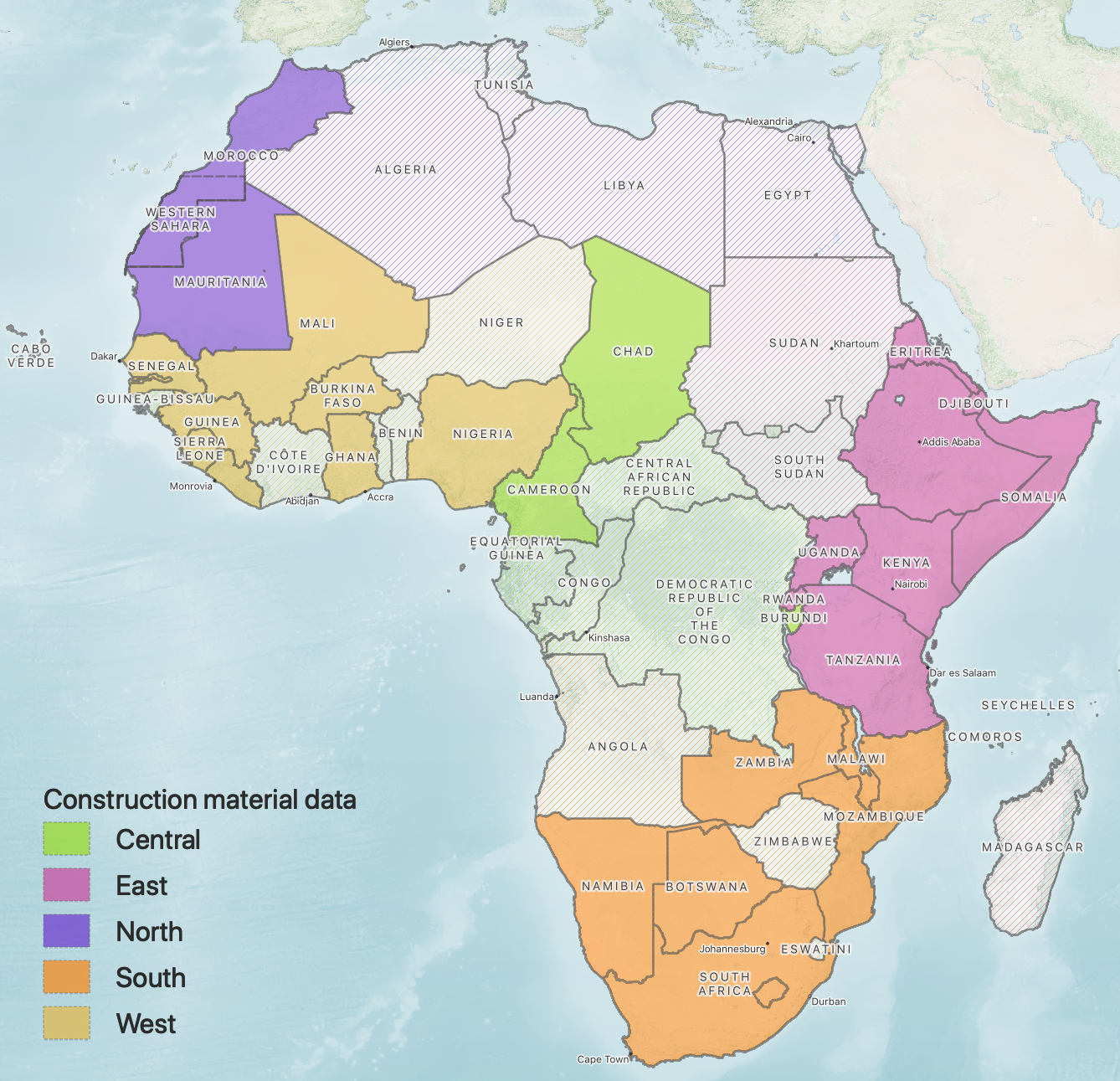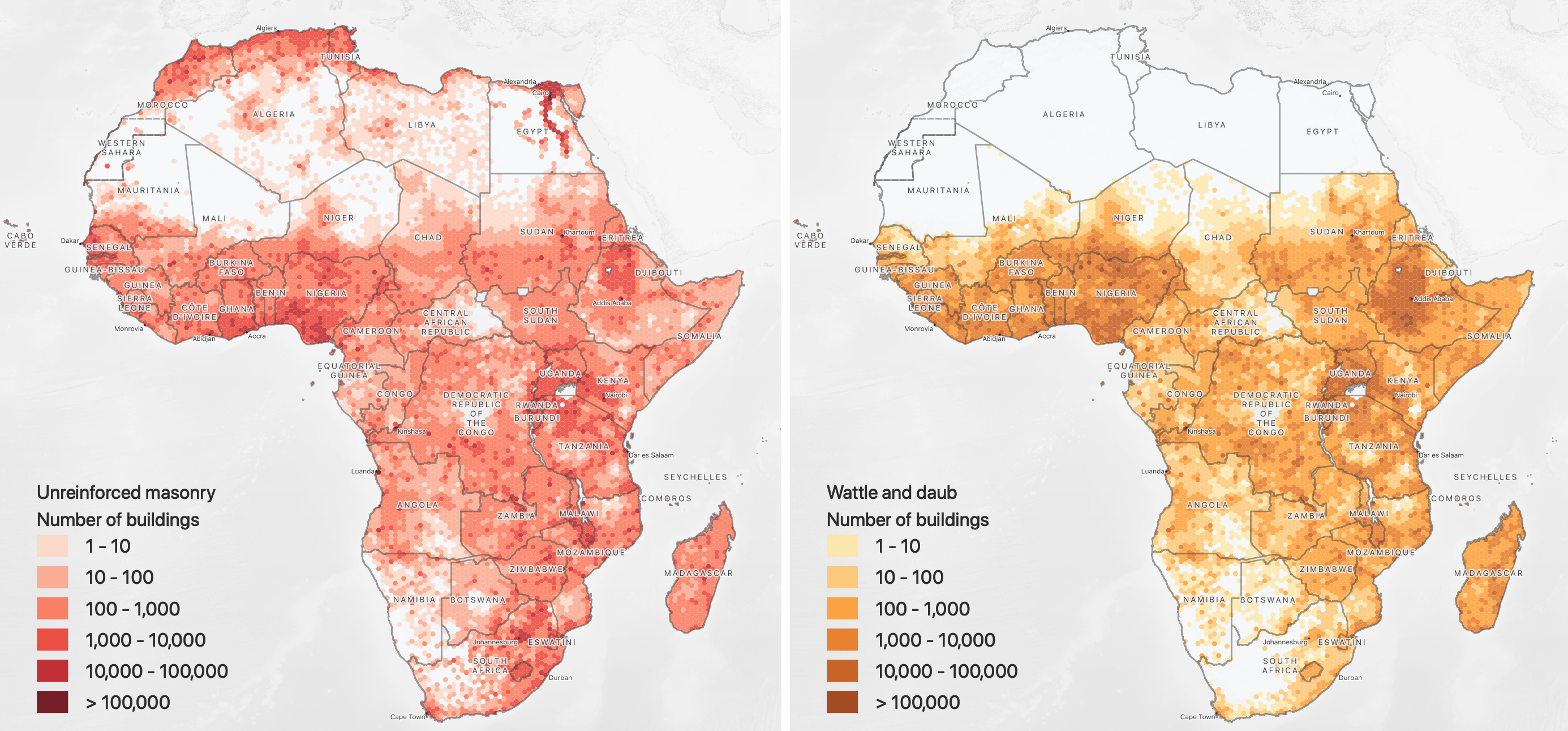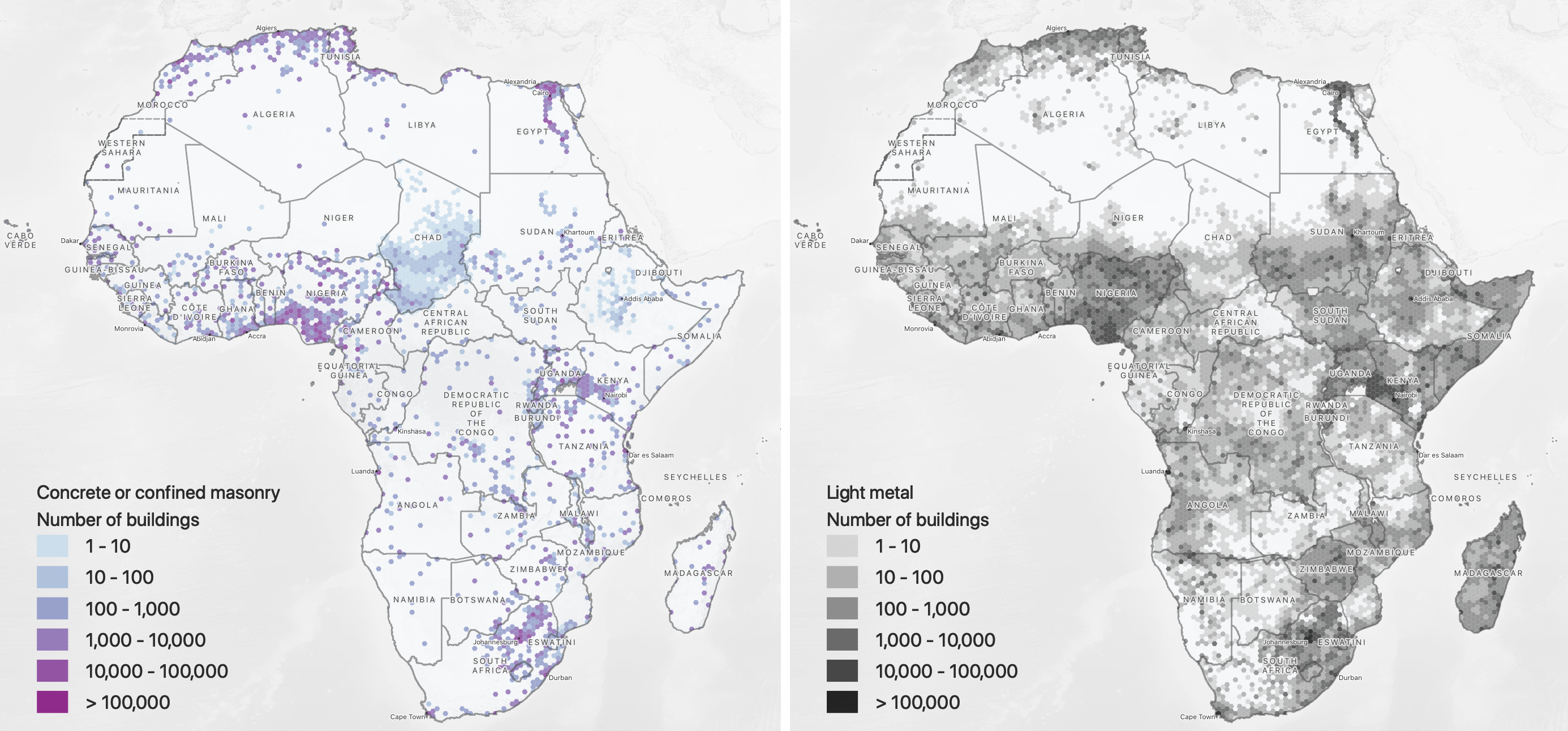Construction practices#
The African continent as a wide range of climates, locally available materials, and levels of urbanization. Therefore, different countries and subregions of Africa have different common construction practices. In the exposure development, data regarding common construction materials was reviewed country-by-country using national statistics. Where country-specific data was not available, construction typologies were inferred based on neighboring countries in the respective region (as defined by the African Union). A summary table and map are shown below.
Region |
Number of countries with wall material data |
Countries with wall material data based on national statistics |
Countries with wall material data inferred from other countries within respective region |
|---|---|---|---|
Central |
3/9 (33%) |
Burundi, Cameroon, Chad |
Central African Republic, Democratic Republic of Congo, Congo, Gabon, Equatorial Guinea, Sao Tome and Principe |
East |
9/14 (64%) |
Djibouti, Eritrea, Ethiopia, Kenya, Mauritius, Rwanda, Somalia, Tanzania, Uganda |
Comoros, Madagascar, Sudan, South Sudan, Seychelles |
North* |
3/7 (43%) |
Morocco, Western Sahara**, Mauritania |
Algeria, Egypt, Libya, Tunisia |
South |
7/10 (70%) |
Botswana, Lesotho, Mozambique, Malawi, Namibia, South Africa, Zambia |
Angola, Eswatini, Zimbabwe |
West |
9/15 (60%) |
Burkina Faso, Ghana, Guinea, Gambia, Liberia, Mali, Nigeria, Senegal, Sierra Leone |
Benin, Ivory Coast, Cape Verde, Guinea-Bissau, Niger, Togo |
*Additional references were used to generate mapping schemes in North Africa based on available literature and habitat reports that covered Algeria, Egypt, Tunisia, and Libya
**Data for wall material data from Western Sahara was included within the 2014 Moroccan Census

The resulting distribution of wall materials is shown at a finer resolution in the images below.



North Africa#
In comparison to Sub-Saharan Africa, North Africa is more highly urbanized. Therefore, building typologies more prevalent to urban areas are more common in North Africa. This includes mid-rise to high-rise concrete infill frame and confined masonry buildings. Concrete buildings were introduced around the 20th century and have become the predominant construction type in many urban areas.
Unreinforced masonry construction is also commonly used, including with clay (fired brick), concrete, or stone masonry units. Masonry buildings are widespread in rural areas, but also can be found in urban areas (particularly within older construction). In some rural areas, adobe brick construction is also observed, although the practice is not as prevalent in North Africa as in Sub-Saharan Africa.
Sub-Saharan Africa#
Since Sub-Saharan Africa is comparatively more rural than North Africa, rural typologies are more prevalent. This includes buildings sourced form locally available materials, such as straw/vegetative materials (e.g., palm, thatch, mats, reeds, grass). In this case, the vegetative material refers to the exterior walls, which are often supported by a lightweight wooden frame. Another common rural building typology in Sub-Saharan Africa is wattle and daub, which consists of a wooden frame infilled by twigs, reeds, grass, or bamboo that is plastered with mud. Wattle and daub is most pravalent in East, Central, and West Africa. Throughout rural areas in Sub-Saharan Africa, construction using adobe bricks/blocks is prevalent.
In urban areas, concrete buildings can be observed. However, the practice is not as prevalent as in North Africa. Masonry construction is also observed in rural areas, with clay (fired brick) and concrete masonry units more common in the South. In some cases, informal urban construction or displaced/refugee camps feature lightweight metal construction, sometimes referred to as corrugated iron or zinc in the national statistics.